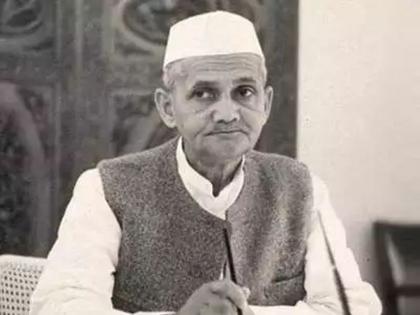Lal Bahadur Shasatri Death Anniversary: Lesser-Known facts of India's Second Prime Minister
By Lokmat English Desk | Published: January 11, 2024 10:09 AM2024-01-11T10:09:17+5:302024-01-11T10:10:15+5:30
11th January we mark as the death anniversary of India's former Prime Minister, Lal Bahadur Shastri. Its his 58th ...

Lal Bahadur Shasatri Death Anniversary: Lesser-Known facts of India's Second Prime Minister
11th January we mark as the death anniversary of India's former Prime Minister, Lal Bahadur Shastri. Its his 58th death anniversary. Shastri, a prominent figure in India's struggle for independence, served as the country's Prime Minister from June 1964 to January 1966. Known for his impeccable character and virtuous life, he assumed office on June 9, 1964, following the death of the first Prime Minister, Pandit Jawaharlal Nehru. Here are are some lesser-known facts of Lal Bahadur Shasatri:
- Lal Bahadur Shastri was born on October 2, 1904, into a Chitraguptvanshi Kayastha family at his maternal grandparents' home. His early years were spent in Ramnagar near Banaras, where his ancestors served the local zamindar.
- Shastri played a crucial role during the 1965 India-Pakistan war, maintaining control in challenging circumstances. He emphasized the significance of both the military and farmers by introducing the slogan 'Jai Jawan Jai Kisan.'
- During India's freedom struggle, Shastri, at the age of 17, was imprisoned for the first time. Despite his wife secretly bringing him two mangoes while in jail, he protested, stating it violated prison regulations.
- Shastri, who spent seven years in jail during the freedom movement, became the Parliamentary Secretary of Uttar Pradesh when the Congress government was established in 1946.
- In 1951, Lal Bahadur Shastri moved to New Delhi and played a significant role in various capacities.
- Following Pandit Jawaharlal Nehru's death in 1964, Shastri became the second Prime Minister. He advocated for the Green Revolution and White Revolution to boost food and dairy production in the country.
- Amid the 1965 India-Pakistan war, Shastri encouraged soldiers and farmers with the slogans 'Jai Jawan' and 'Jai Kisan' to address food shortages. He even stopped receiving his salary during that period.
- Lal Bahadur Shastri passed away on January 11, 1966, in Tashkent, where he had gone to sign the ceasefire declaration with the then President of Pakistan, Ayub Khan, to conclude the war.